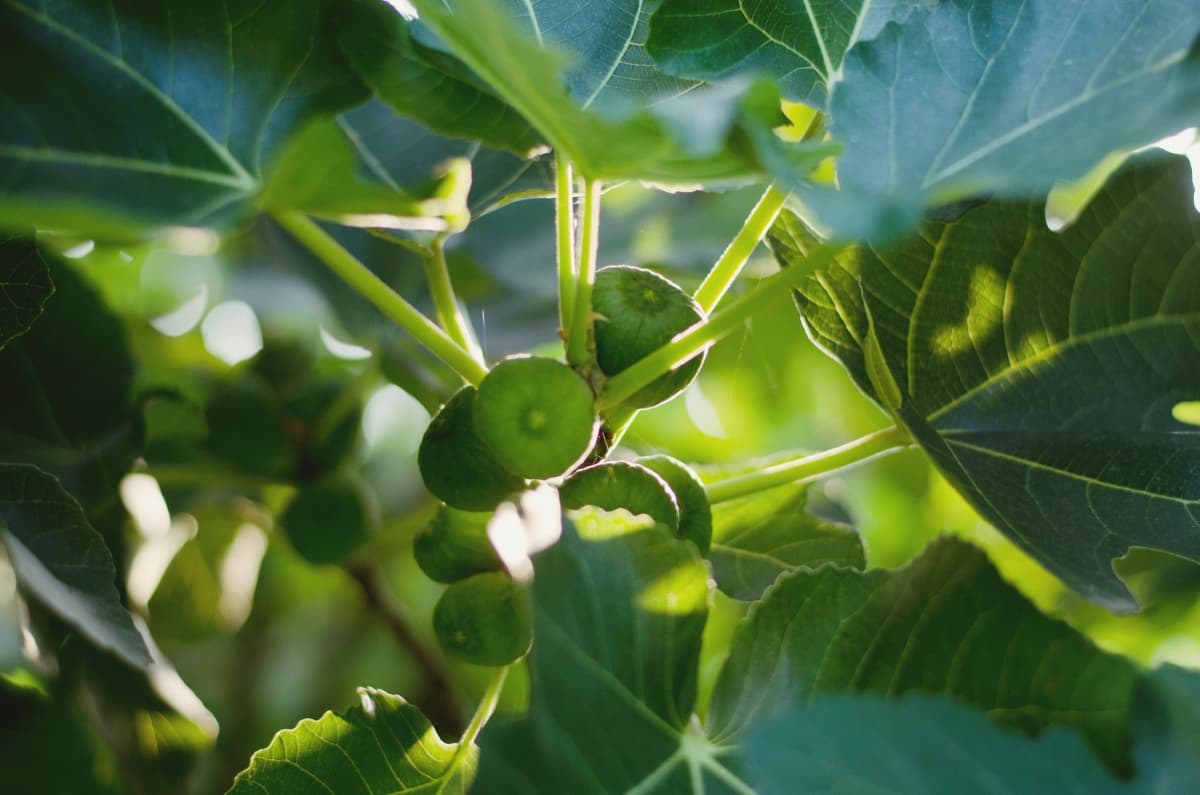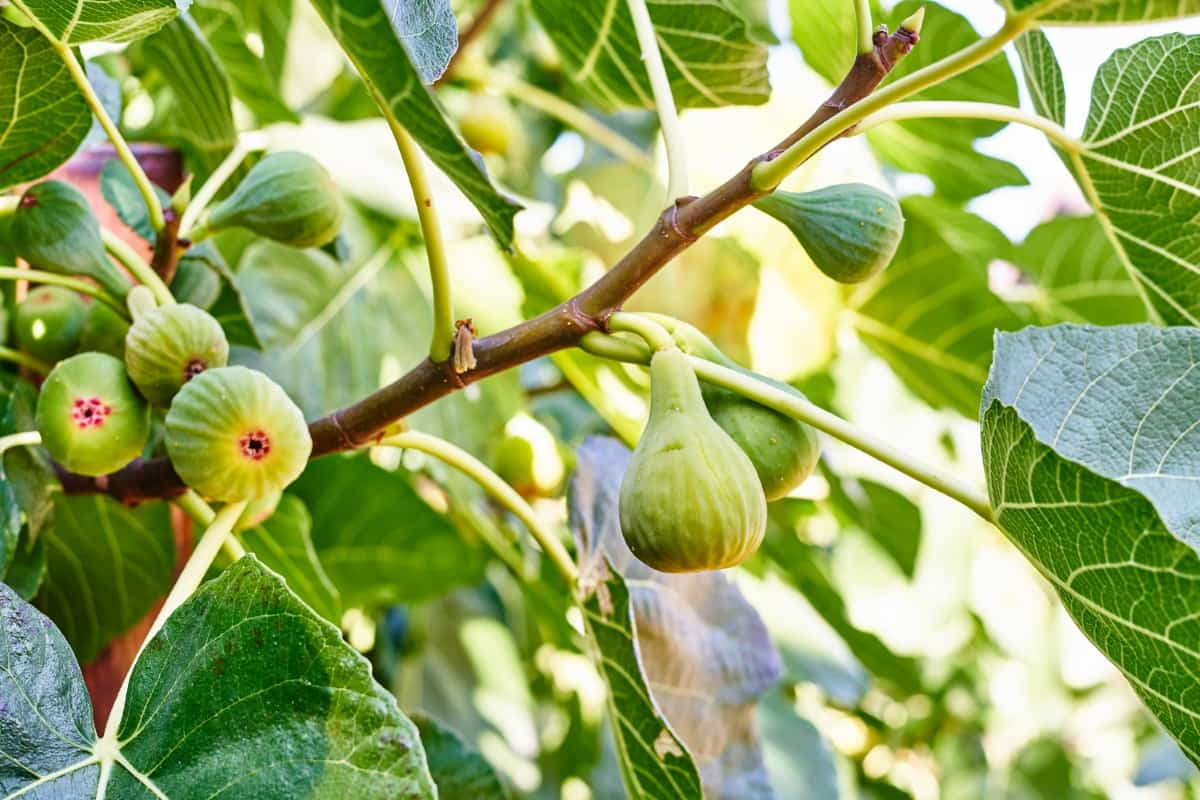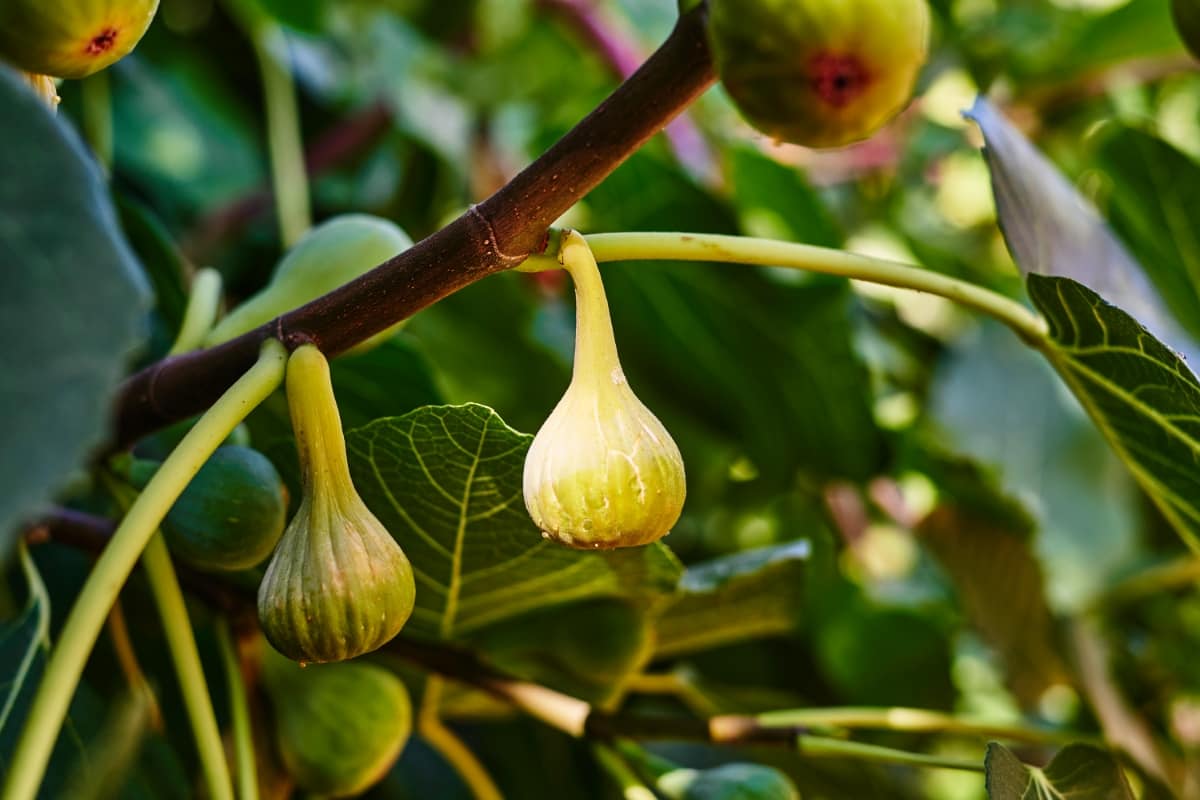Fig trees are an integral part of many gardens and landscapes. These trees can suffer from various health issues without proper care, including dying. Several causes lead to a fig tree’s ultimate demise. These include environmental factors such as too much or too little water, nutrient deficiencies, pest or disease problems, and root damage. The underlying reason should be identified and addressed to revive a dying fig tree.

9 Causes of Dying Fig Tree
Why is My Fig Tree Dying in Summer Heat, and How Can I Save It?
Sadly, our beloved fig trees are dying due to the summer heat. When the temperature rises, the tree may become stressed and decline. The heat can cause the leaves to wilt, dry out, and even turn yellow. It can also cause the fruit to ripen prematurely, leading to a small harvest. To save your fig tree from the summer heat, you will want to take steps to provide it with some extra care.
Ensure the tree gets enough water, especially during the hottest day. Consider mulching the tree’s base to help keep the roots cool and provide shade. If possible, provide some shade for the tree as well. You can also prune away dead or dying branches to reduce stress on the tree.
Preventing Fig Tree Death from Fungal Infections: Effective Remedies and Prevention Tips
Fig trees can be vulnerable to fungal infections that can cause death. Fortunately, there are several effective remedies and prevention tips to help prevent fig tree death from fungal infections. Look for yellowing leaves, dead or dying branches, or white spots on the leaves or bark. Immediate action needs to be taken if any of these symptoms are present. The first step in preventing fig tree death is to keep the tree well-maintained.
Prune the dead or diseased branches and make sure the tree is well-watered, especially during dry spells. Mulching the area around the tree can help retain moisture, as can adding compost to the soil. If a fungal infection is discovered, a fungicide is an effective treatment, as it will help kill the fungus and prevent further infection. However, following the label instructions carefully when applying fungicide is important, as some can harm the tree.
Identifying Nutrient Deficiencies in Fig Trees and Remedies to Revive Them
While these trees are fairly hardy, they can still suffer from nutrient deficiencies. Fortunately, with proper diagnosis and treatment, these deficiencies can be remedied, and your fig tree can be revived. Common signs of nutrient deficiency include yellowing or discoloration of the leaves and stunted or decreased growth. If no other signs are present, a soil test can be done to determine the exact nutrient deficiency.
Once the deficiency is identified, the next step is to provide the necessary nutrition to the tree. A fertilizer specifically formulated for fig trees can replenish the nutrients the tree lacks. Organic fertilizers, like compost or manure, can also provide the necessary nutrients. Additionally, soil amendments, like sulfur or lime, can be added to improve soil quality and help the tree absorb nutrients.
How to Protect Fig Trees from Pests and Diseases to Prevent Decline and Death
Protecting fig trees from these threats ensures their long-term health and prevents decline and death. Here are the steps to help you protect your fig trees from pests and diseases.
- Look for signs such as discolored or wilted leaves, abnormal growth patterns, or tiny, worm-like insects. If you notice any signs, quickly protect the tree from further damage.
- Remove weeds regularly and keep the area around your fig tree free of fallen fruit, leaves, and other debris.
- Treat the tree with a specific insecticide or fungicide. Follow the instructions on the label carefully.
- Use a protective barrier or wrap to keep pests and diseases away from your fig tree. Wrapping the tree trunk in burlap or plastic wrap can help keep away ants, borers, and other pests.
Overwatering Issues in Fig Trees: Signs, Symptoms, and Steps to Rescue a Dying Tree
Overwatering is a well-known cause of death for fig trees. Too much water can cause root rot, quickly killing your fig tree. Signs of overwatering in a fig tree include wilting, yellowing, dropping leaves, and root rot. If you suspect that your fig tree is being overwatered, the first step to rescuing it is to reduce the water you give it.
In case you missed it: 9 Causes of Dying Outdoor Plants and How to Fix Them?

You should also check the soil to ensure it is not too wet and draining well. If the soil is very wet, add organic matter like compost to help it drain better. If it is a potted plant, repotting the tree in a larger pot with better drainage or even moving it to a sunnier location to help it absorb the water better.
Underwatering Issues in Fig Trees: Signs, Symptoms, and Steps to Rescue a Dying Tree
Underwatering in fig trees can lead to the eventual death of the tree. Fig trees are sensitive to water shortages, requiring a consistent water supply. Signs of underwatering in a fig tree include wilting leaves, yellowing, and dropping prematurely. The tree’s bark may appear dry, cracked, or brittle. The soil around the tree may also appear dry and crumbly.
When a fig tree is suffering from underwatering, first, increase the amount of water being given to the tree. Watering the tree deeply and thoroughly is important, making the water reach its roots. Secondly, mulch the tree’s soil with a layer of organic material such as compost, bark, or straw. This will hold moisture in the soil.
Fig Tree Winter Damage/dying: Protecting Trees from Frost and Cold Temperatures
Every winter, the cold temperatures, and frost can cause damage to fig trees and other plants in the garden. To protect these trees from the winter elements, a few steps can be taken to survive the plant in the winter season.
- Ensure the trees are well-watered before the cold temperatures settle in. A deep soak of the tree’s root zone should be done before winter.
- Ensure that the tree is protected from the winter winds by staking the tree to help give it extra support and protection from the wind. Additionally, wrapping the tree’s trunk with burlap or other material can help to insulate and protect the tree from cold temperatures.
- Mulching around the tree to keep the soil temperatures more consistent helps protect the tree from extreme temperatures.
Improper Pruning May Cause Fig Tree Death: Pruning Methods for Healthy Growth
It is essential to prune correctly, as improper pruning can lead to tree death. Pruning is a crucial part of fig tree care, as it helps to maintain the tree’s health and encourage proper growth. To ensure healthy growth, understand proper pruning methods and techniques. To properly prune a fig tree, use the three-cut method. This method involves making three cuts to the branch: one at the top, one at the bottom, and one in between.
This allows the branch to heal cleanly and prevents damage to the tree. Remember that pruning should be performed at the right time of year. In the case of a fig tree, it is late winter or else early spring. Finally, when pruning a fig tree, it is important to remember to prune evenly. This means that each branch should be pruned the same length, and the same amount should be removed. This helps to keep the tree symmetrical and healthy.
Reviving a Stressed Fig Tree: Rehabilitation Methods for Overall Recovery
To help a fig tree recover, several methods of rehabilitation should be employed to ensure overall recovery. Common causes of stress include insufficient water, nutrient deficiencies, fungal or insect infestations, extreme temperatures, and insufficient sunlight. Once the cause has been identified, the best course of action should be determined. Depending on the cause, different methods should help the tree recover.
In case you missed it: 9 Causes of Dying Avocado Tree and How to Fix It?

For example, if the tree is suffering from nutrient deficiencies, fertilization may be necessary. If the tree has an insect infestation, appropriate insecticides should be used to treat the problem. In addition to addressing the specific cause of the stress, other measures can be taken to help the tree recover. For example, ensuring the root system is healthy, and the soil is well-draining is essential. Furthermore, the tree should be given adequate irrigation to optimize growth.
Conclusion
By addressing the underlying cause of a dying fig tree, it is possible to revive the tree and restore its health. With proper care and attention, a fig tree will be healthy and produce fruits for many years.
- Feed Your Flock for Less: Top 10 Tips to Save on Chicken Feed
- Ultimate Guide to Ossabaw Island Hog: Breeding, Raising, Diet, and Care
- Hatching Answers: The Top 10 Reasons Your Chickens Aren’t Laying Eggs
- Eggs and Economics: Breaking Down the Cost of Raising Backyard Chickens
- Defend Your Greens: Proven Methods to Keep Iguanas Out of Your Garden
- Ultimate Guide to Cinnamon Queen Chicken: A Comprehensive Guide for Beginners
- Ultimate Guide to California Tan Chicken: Breeding, Raising, Diet, Egg-Production and Care
- Ultimate Guide to Marsh Daisy Chicken: Breeding, Raising, Diet, and Care
- 10 Types of Chicken Farming Businesses You Can Start for Profits